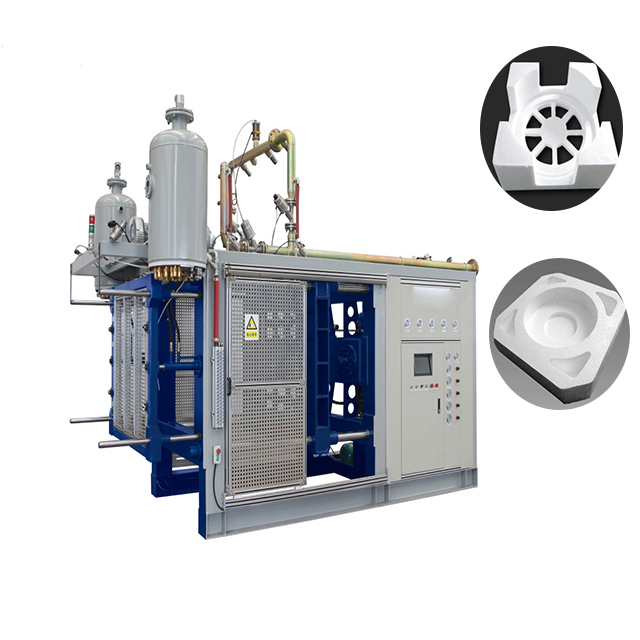Lost foam casting, also known as solid mold casting, is to bond and combine foam models of the same size as the castings into model clusters. After brushing with refractory paint and drying, they are buried in dry quartz sand for vibration modeling, and poured under negative pressure to make the model cluster. Model gasification, liquid metal occupies the position of the model, solidified and cooled to form a new casting method. The whole process flow is as follows:
First, the selection of foam beads:
Expandable polystyrene resin beads (EPS) are commonly used for casting non-ferrous metals, gray iron and general steel casting.
2. Model making: There are two situations:
1. Made from foam beads: pre-foaming - curing - foam molding - cooling and ejection
①Pre-foaming: Before the EPS beads are added to the mold, they must be pre-foamed to expand the beads to a certain size. The pre-foaming process determines the density, dimensional stability and accuracy of the model and is one of the key links. There are three suitable methods of bead prefoaming: hot water prefoaming, steam prefoaming and vacuum prefoaming. Vacuum pre-foamed beads have high foaming rate, dry beads, and are widely used.
②Aging: The pre-foamed EPS beads are placed in a dry and ventilated silo for a certain period of time. In order to balance the external pressure in the bead cells, make the beads have elasticity and re-expansion ability, and remove the water on the surface of the beads. The aging time is 8 to 48 hours.
③Foam molding: Fill the pre-foamed and cured EPS beads into the cavity of the metal mold, and heat the beads to expand again, fill the gaps between the beads, and fuse the beads with each other to form a smooth surface, the model. It must be cooled before the mold is released, so that the model is cooled to below the softening temperature, and the mold can be released after the model is hardened and shaped. After the mold is released, there should be time for the model to dry and dimensionally stabilize.
2. Made of foam plastic sheet: foam plastic sheet - resistance wire cutting - bonding - model. For simple models, the resistance wire cutting device can be used to cut the foam plastic sheet into the required model. For complex models, first use a resistance wire cutting device to divide the model into several parts, and then glue it to make it a whole model.
3. Models are combined into clusters: the self-processed (or purchased) foam model and the pouring riser model are combined and bonded together to form a model cluster. This combination is sometimes carried out before the coating, sometimes in the coating preparation. It is carried out during the post-embedding box modeling. It is an indispensable process in lost foam (solid) casting. Currently used bonding materials: rubber latex, resin solvent and hot melt adhesive and tape paper.
4. Model coating: The surface of the solid casting foam model must be coated with a certain thickness of paint to form the inner shell of the casting mold. For the special paint for lost foam casting, add water and stir in the paint mixer to obtain a suitable viscosity. The stirred paint is put into the container, and the model group is coated with the methods of dipping, brushing, showering and spraying. Generally, apply twice to make the coating thickness 0.5 ~ 2mm. It is selected according to the type of casting alloy, structural shape and size. The coating is dried at 40~50℃.
5. Vibration modeling: the process includes the following steps: sand bed preparation - placing EPS model - filling sand - sealing and shaping.
①Sand bed preparation: Put the sand box with air extraction chamber on the vibrating table and clamp it tightly.
②Place the model: After vibrating, place the EPS model group on it according to the process requirements, and fix it with sand.
③ Sand filling: add dry sand (several sand adding methods), and at the same time apply vibration (X, Y, Z three directions), the time is generally 30~60 seconds, so that the molding sand is filled with all parts of the model, and the sand is filled with sand. Bulk density increases.
④Seal and shape: The surface of the sand box is sealed with plastic film, the inside of the sand box is pumped into a certain vacuum with a vacuum pump, and the sand grains are "bonded" together by the difference between the atmospheric pressure and the pressure in the mold, so as to keep the mold from collapsing during the pouring process. , called "negative pressure setting, more commonly used.
6. Pouring replacement: The model is generally softened at about 80 °C, and decomposed at 420~480 °C. The decomposition products have three parts: gas, liquid and solid. The thermal decomposition temperature is different, and the content of the three is different. When the solid mold is poured, under the heat of the liquid metal, the EPS model undergoes pyrolysis and gasification, and a large amount of gas is generated, which is continuously discharged through the coating sand and discharged to the outside, forming a certain air pressure in the mold, the model and the metal gap. The metal continuously occupies the position of the EPS model and advances forward, and the replacement process of the liquid metal and the EPS model occurs. The end result of the displacement is the formation of a casting.
7. Cooling and cleaning: After cooling, it is the easiest to drop sand in solid casting. It is possible to tilt the sand box to lift the casting out of the sand box or directly lift the casting out of the sand box, and the casting and dry sand are naturally separated. The separated dry sand is treated and reused.

Post time: Feb-15-2022
